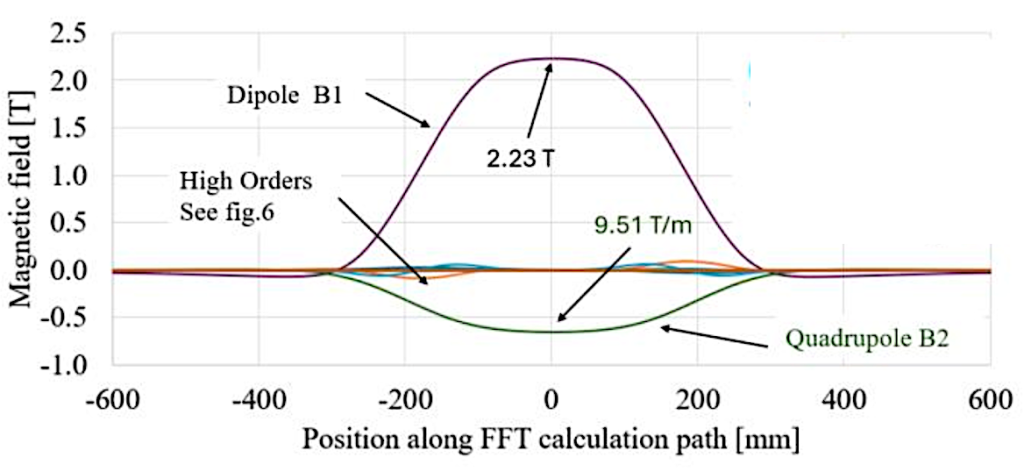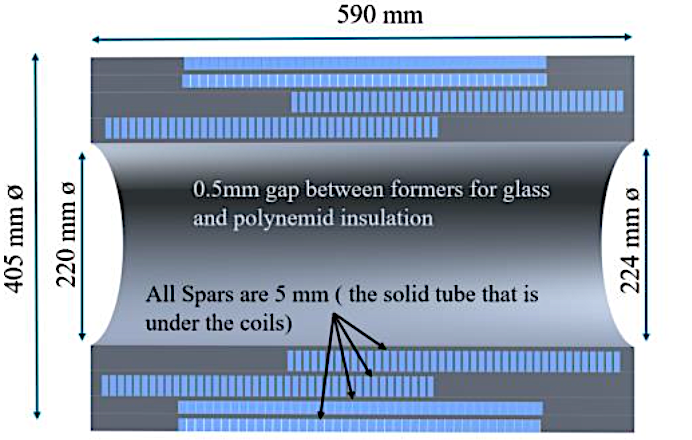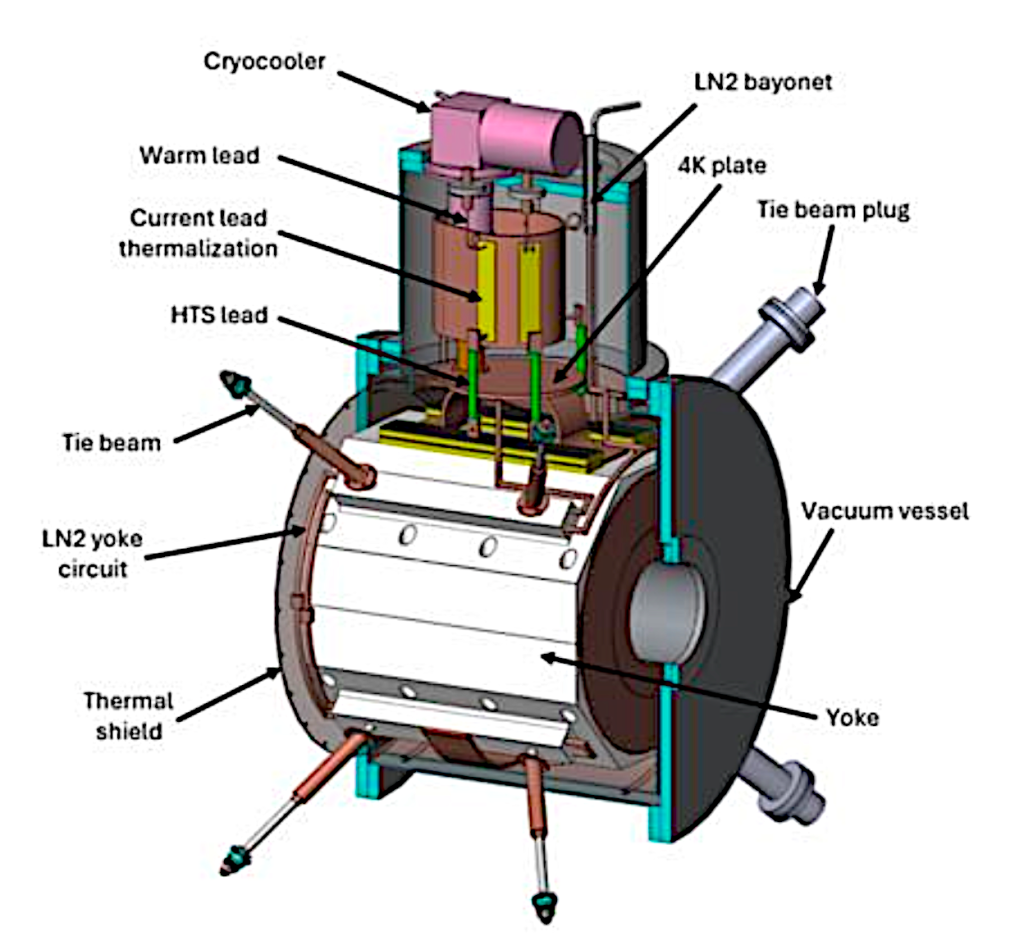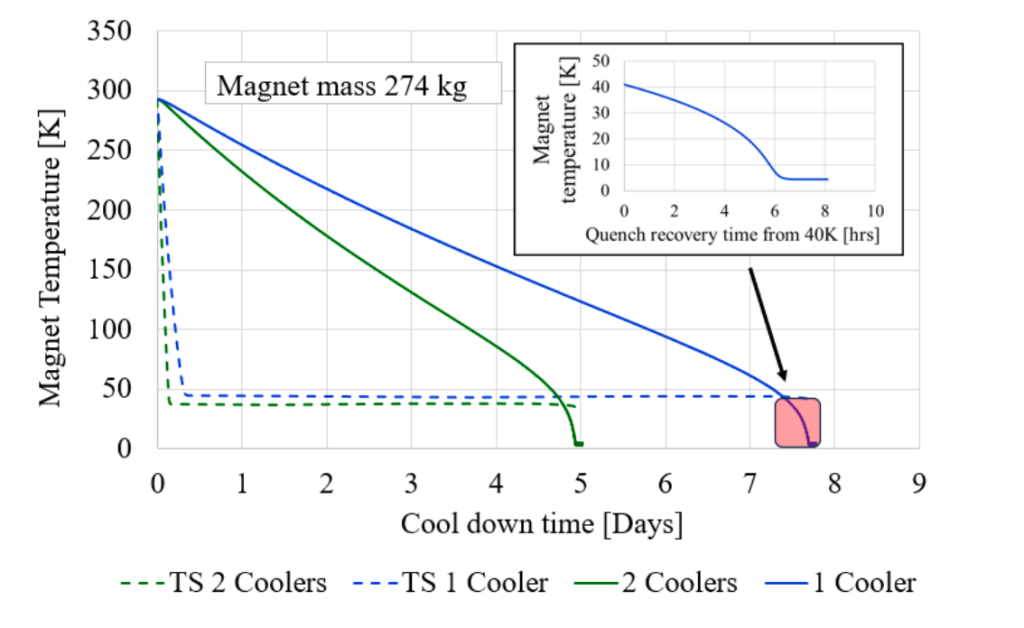MAGDEM: the ISRS MAGnet DEMonstrator
The University of Huelva is leading the development of the innovative superconducting magnets to demonstrate the operation principle ISRS. The task focus on the design and optimization of a multifunction (dipole + quadrupole) super low-weight iron-free helium-free Canted Cosine-Theta superconducting magnet, the so called MAGDEM prototype (MAGnet DEMonstrator), operating at 4.5 T. MAGDEM units are the building blocks of the ISRS particle storage ring. The innovative design operating at 100 A incorporates a dipole coil of 2.2 T peak field within a quadrupole coil of 9 T/m, cooled by cryocoolers, and a 200 mm beam tube at room temperature for radioactive ion beam circulation. The complete system including cryostat has only 750 mm length and weights less than 500 Kg. Interestingly MAGDEM units can also be used for other accelerator applications demanding compact lightweight superconducting magnets, such as future recirculating beam rings for HIE-ISOLDE or medical hadron therapy systems.

Solenoid field Bz, field plots along straight line ON and OFF axis. Line integrals all less than 1 unit.

Cross section of the tapered MAGDEM dipole and quadrupole coil formers.

Sketch of the cryostat and cooling system.

Cryostat cooldown and quench recovery times.

Full size 3D-printed models of MAGDEM critical parts have been produced by 3D printing to detailed study of MAGDEM assembly. The magnetic design can be probed with pulsed currents at room temperature.



